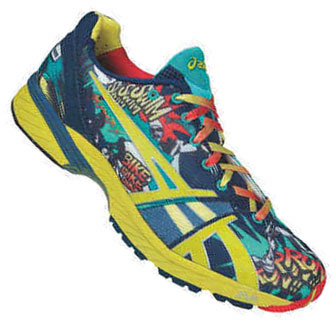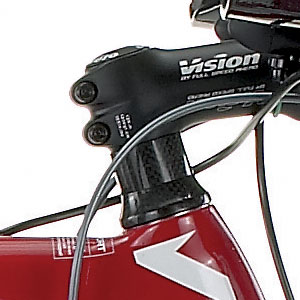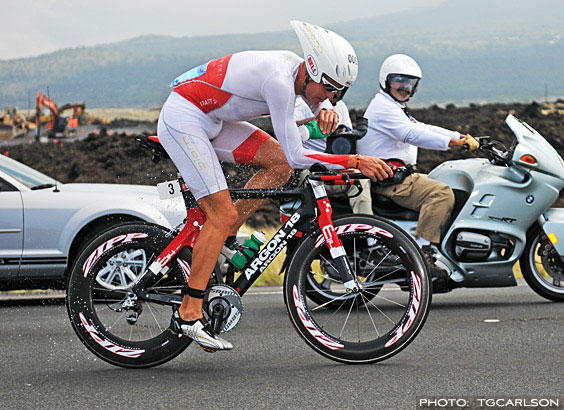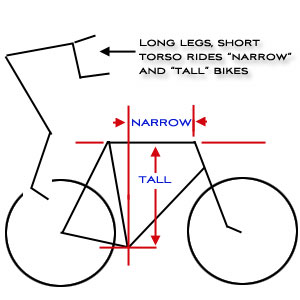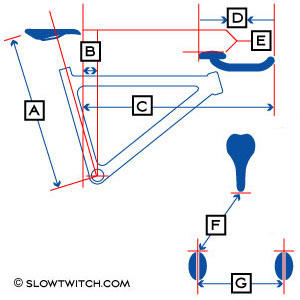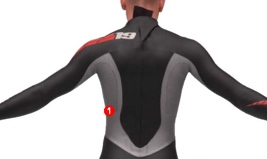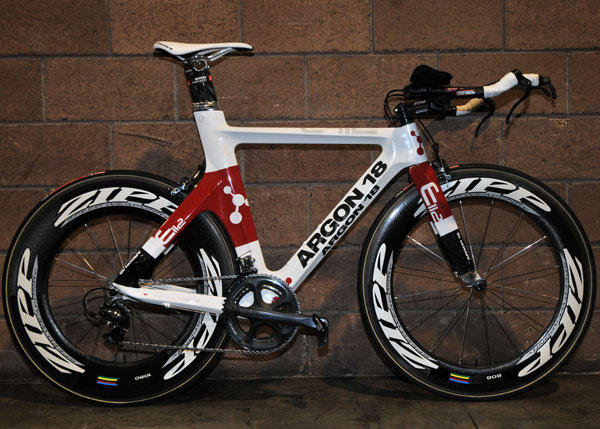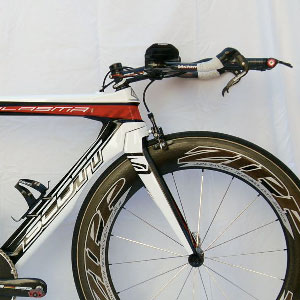Industry
Bike positions of pro triathletes
Ex pro duathlete, and Kuota sales guru, Paul Thomas apprised me of a very interesting experiment he undertook at the most recent Hawaiian Ironman.
“I sat on the Queen K Highway as the riders were about 5 miles from the end of the bike leg,” he related. “This was about 7 hours into the race. I counted 72 riders, all of whom [of course] had aero bars on their bikes. Of these, 42 were riding with their hands on their pursuit bars.”
If you allow about 1:20 for the swim, and these folks were riding about a 6 hour bike split, they were destined to finish, on average, with a final time between 11:00 and 11:40. Most were representative of the median Kona finisher.
Let’s leave the topic of these 72 riders, and we’ll return to them in a few moments.
Last year former Kona Champ Chris McCormack was in a fit workshop here on the property. I asked, “Chris, let’s say I made a DVD of your Kona bike ride, and I edited out the part where you were in the aero position, as well as the time spent braking and cornering. How long would my DVD be?”
“I don’t know,” he pondered. “Thirty seconds?”
What makes McCormack, and the other pros like him, able to ride in the aero position during the entire bike leg, while these 11 hour Ironman contestants as often as not can’t?
On a recent thread in our reader form, this was written by a user:
“I’ve observed that triathletes fall into two camps in terms of position: those who want to get forward and low to be most aerodynamic and who are willing to take the time, effort and pain to get adapted to the position; and the majority, who decide to be more upright for the sake of comfort.”
But if McCormack and the other pros are adapting through “pain” to achieve their positions, and the “majority” choose “upright” positions for the sake of “comfort” (certainly a view held by many more than this singular forum reader), why are the pros sitting in their aero position the whole way, while it’s the “comfortable” age groupers who’re sitting up?
In another fit workshop, we had Mark Allen in attendance. I asked him, “Mark, once and for all, did you win Kona 7 times and the Nice triathlon 9 times because you have the taint of steel?
“No!” he replied, and went on to explain he needed comfort on the bike as much as anyone.
And why should we think an age group triathlete, who might ride 100 miles a week on average, is more needful of a comfortable bike position than a pro who might ride three or four times that mileage?
Indeed, I think it’s the opposite: how could we ever expect a pro to ride in the uncomfortable positions chosen by age groupers?
Indeed, I have positioned many pro triathletes and time trialers, and I have yet to find my first subject willing to undergo a period of “pain” and “adaptation.” Unless a pro triathlete is comfortable and powerful on the fit bike, from the get-go, he won’t ride the position. The process of fitting a pro, and his response to the position, is never any different than that of an age-grouper.
Let’s take a look at the positions of some of the pros, and see if we can find some commonalities that accrue to power, comfort and aerodynamics. While we’re at it, I’ll point out some pro positions that I think don’t make the grade, and describe why that is and what ought to change.
Click on the first thumbnail pic above and we’ll start.
